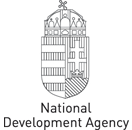IntraMed-C2C
(2010-2013) Clinics have a high potential for innovations in product, process and service development. There are a lot of reasons, why this innovation potential is insufficiently transferred into results such as product development for companies, Intellectual Property (IP) generation and better health care processes. Obstacles are e.g. different interests of clinics (welfare of patients, efficient clinic management etc.) and big companies (economic interests, dominate as a supplier etc.). Especially small and medium-sized companies (SMEs) and developments initiated by the clinical staff do not have the resources and chances to transfer their ideas and knowledge into products.
Concept of the Project
InTraMed-C2C will initiate, develop and provide tools for strengthening the access of SMEs (European wide) to this innovation potential in the clinics and to open new markets for their products. SMEs are highly interested to get access and to be involved in this innovation transfer process and they have certain advantages to be successful. SMEs have the flexibility to develop labtypes, prototypes or small business solutions for bottom-up approaches out of the daily clinical work. A tool for initiating the access of SMEs to the clinic could be workshop-based. Pilot workshops will be organised by the project according to regional particularities.
In parallel to this first step InTraMed-C2C will monitor, analyze and compare the situation in the involved countries of the project and the project partners, respectively. This step includes not only the bilateral situation of the clinics and SMEs, but also the general environment concerning political restrictions of the health care sector in the country, the cost reimbursement system for financing this innovation transfer, and the subsequent financing of providing the medical service or selling the products from the industry to the health care provider.
In the next step of the project concepts will be developed, how these tools of the first steps can be transferred to transregional, national and transnational areas.
Target groups
-
Clinics / hospitals: include university hospitals and clinics with all supply levels, publicly owned, private non-profit and private for-profit. Relevant groups in these clinics are primarily medical doctors, but also R&D employees, technicians and nursing staff. Within this group relevant people regarding innovations have to be identified by each project partner. Criteria are publication lists, research project involvements, generated IPs or others.
-
SMEs: decision makers / management, R&D staff, marketing / product development. From among SMEs those companies are relevant which have own resources or co-operations with others for initiating and performing technology transfer projects.
-
Research & development institutions: Decision makers, management, R&D staff, engineers, technicians.
-
Other relevant groups: health care insurance companies, health care decision maker groups and relevant political groups.
Expected results
-
Comparison of the situation between clinics and SMEs in each participating country in line with their specific health care environment and reimbursement system
-
Development of tools for access of SMEs to the innovation capability in clinics
-
Implementation of these tools
-
Transformation of these tools to a transregional and transnational level
-
Pilot generation of new products, processes and services
-
Implementation of a European wide tool for innovation transfer from clinics to companies


